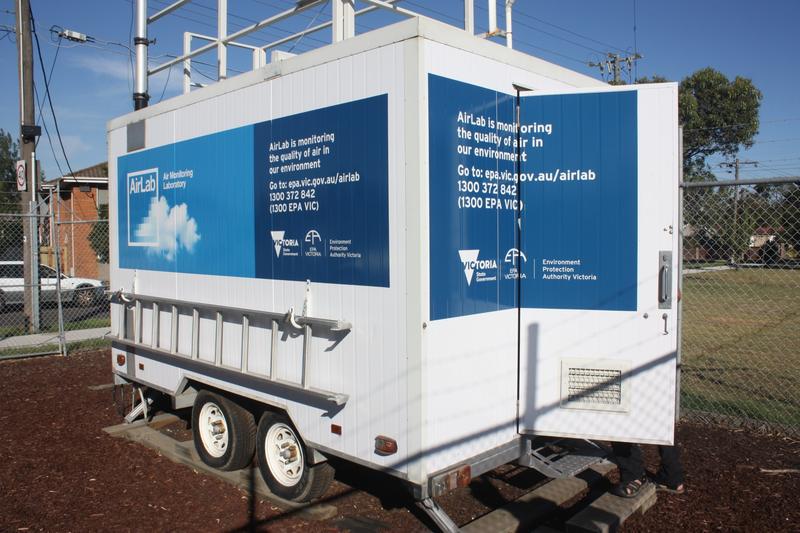Victoria’s Environment Protection Authority in IoT push
- 01 August, 2018 14:13

EPA CIO Chris Moon: New systems being built natively in the cloud and integrate to support forthcoming IoT rollouts across the state
Victoria’s Environment Protection Authority (EPA) has an IT overhaul underway that is seeing the department create a new data exchange to analyse information from potentially thousands of IoT devices in the field.
The overhaul is part of a $182.4 million investment from the Victorian government to transform the environmental regulator’s operations. It followed an independent inquiry into the EPA’s roles and powers when it comes to preventing and reducing harm from pollution and waste.
Last year, the agency kick-started a ‘cloud-first’ strategy, implementing new software-as-a-service applications (its preferred route) as well as PaaS and IaaS infrastructure.
“We’ve almost got a burning platform because we’ve got new legislation [being introduced] in about two years and we need to get our technology systems ready for that legislation,” EPA’s CIO Chris Moon told CIO Australia.
“We do things like issuing permits to organisations – if you want to build a factory or facility that has certain environmental impacts, then we will be regulating that.”
Moon said the EPA’s core financial platform is now in the cloud and the agency has moved to Microsoft Office 365. It will soon move a large customer relationship management system to the cloud, said Moon.
The EPA is also deploying the Dell Boomi integration platform to replace a series of bespoke, on-premise middleware connectors. This will enable the agency to connect a vast number of systems to its CRM and HR platforms, making it easier to exchange data with government departments, emergency services and other organisations.
“In two years from now, I’d expect any of our new systems to have been built natively in the cloud. Obviously, we have a lot of systems that we have built up over the years but we are not going to transition all of them for the sake of it,” he said.
IoT expansion
The EPA already has a couple of hundred sensors in the field – it operates Victoria’s air quality network, which has 17 sites or monitoring stations across the state. The scientific equipment used to monitor air quality is large and expensive, said Moon.

The agency will now build a platform that makes use of lower cost IoT devices that, despite not offering the same level of reliability as larger devices, are great for providing ‘indicative information,’ he said.
“We want to build a technology platform that enables us to use these [lower cost] devices. At the moment, when somebody in our science division has 10 sensors and wants to test them out … it can take us six months to set them up in the current databases and rewrite processes. We can’t respond as quickly as we would like,” he said.
The EPA also plans to combine data generated by smart lampposts and building sensors with satellite and drone feeds, for example, to gain a more holistic picture of the state of the environment in Victoria. With this visibility, the agency will be able to assess hazards and develop the most appropriate solutions such as waste removal strategies in the case of spills or provide tailored advice to land managers and local councils.
“When we have a concern that something might be happening to an environment, we can use our drones to [investigate]. What we want to do is overlay [information] that with our sensor network … and say, ‘we’ve looked at that site a month ago and this is what it looks like now'."
“Satellite technology has really advanced and it can now be used to predict and to view air pollution and air quality. So I want to be able to combine information gathered [from these sources] to give us a full picture of what is happening at a site,” he said.
This will happen once the foundational technology infrastructure is in place by the end of the calendar year, said Moon.
"By then, we are aiming to move off our current data management platform which is a very traditional database. From January onwards, we will start to bring on these new use cases where we can bring in rich data sources from other organisations and councils and [combine them] with those satellite images,” he said.
“This vision is that we will be able to cope with millions [of sensors] potentially. There aren’t millions of air quality sensors in Victoria yet but we want to be in a position where we can utilise them when they come out.”
Follow CIO Australia on Twitter and Like us on Facebook… Twitter: @CIO_Australia, Facebook: CIO Australia, or take part in the CIO conversation on LinkedIn: CIO Australia
Follow Byron Connolly on Twitter: @ByronConnolly

